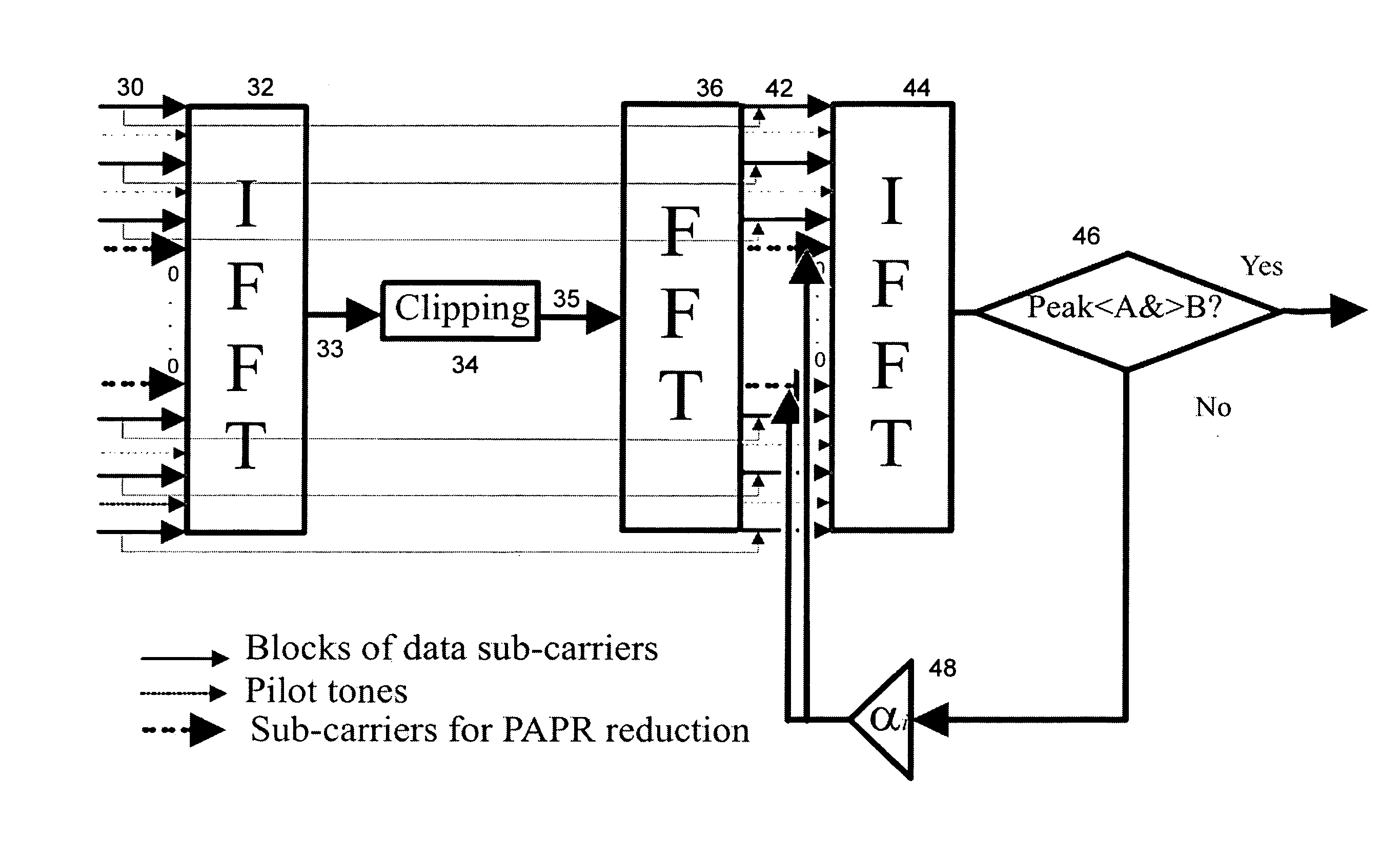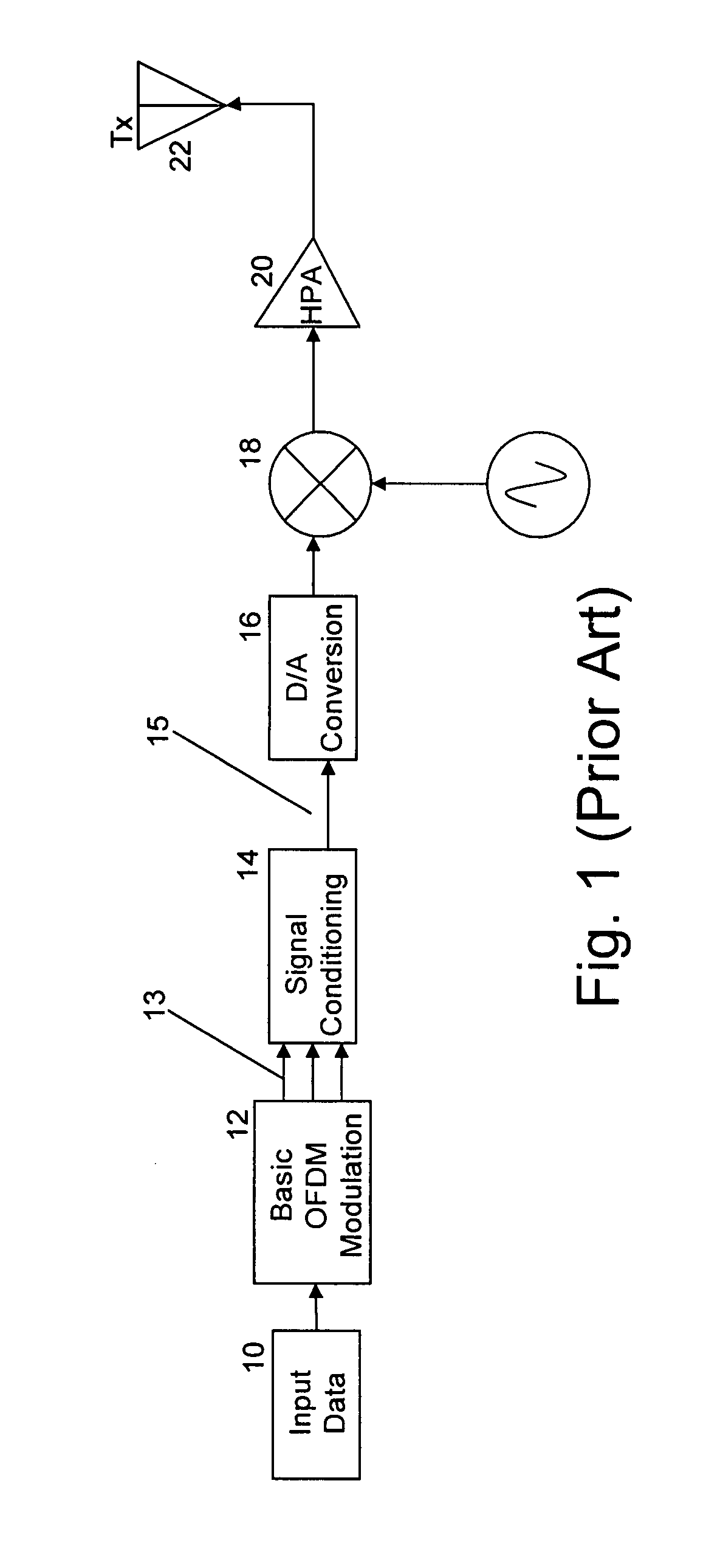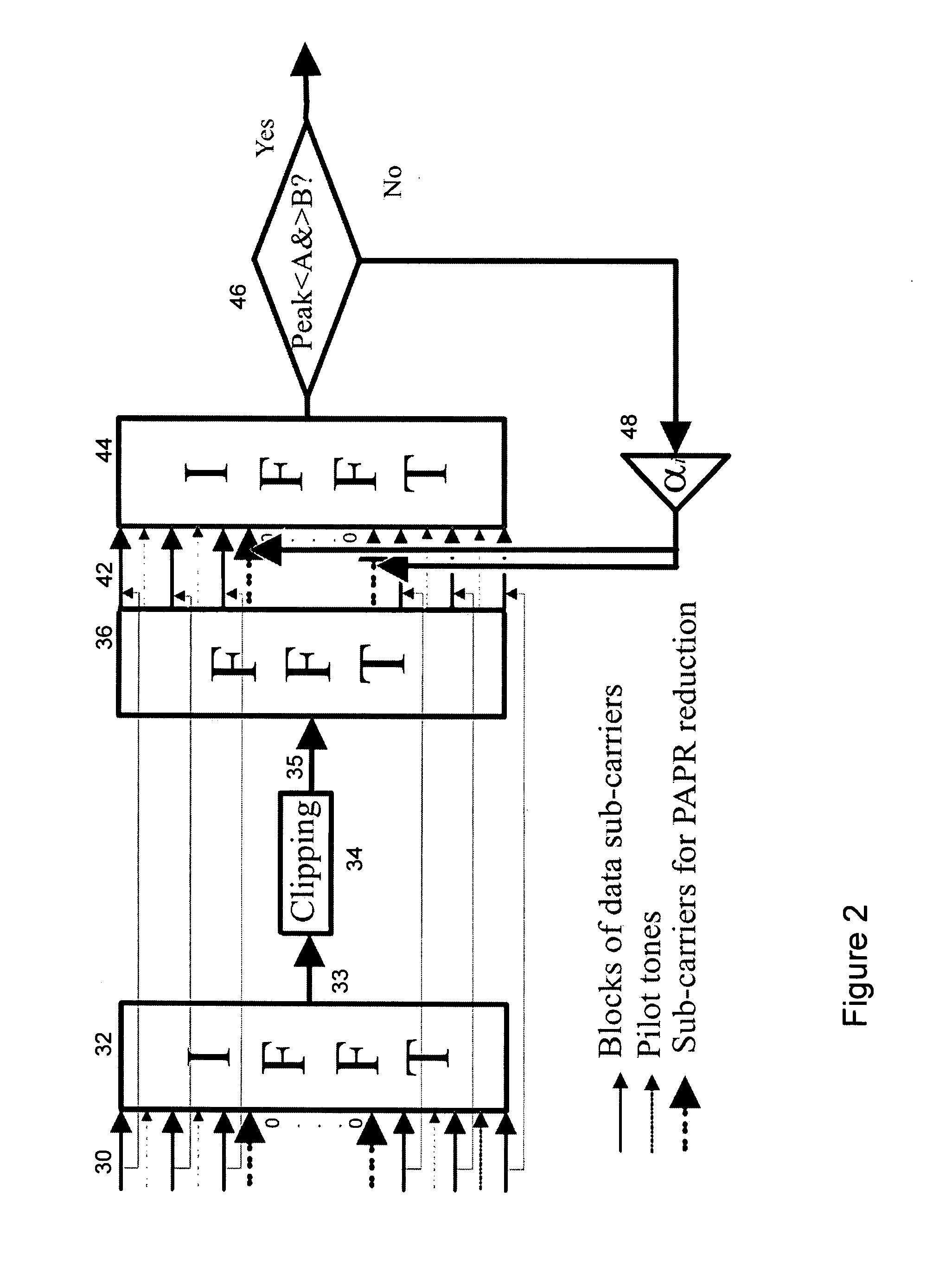Peak-to-average-power reduction of OFDM signals
- Summary
- Abstract
- Description
- Claims
- Application Information
AI Technical Summary
Benefits of technology
Problems solved by technology
Method used
Image
Examples
Embodiment Construction
[0067]The preferred embodiment is implemented as an improved signal conditioning stage 14 for a transmitter of the type shown in FIG. 1.
[0068]Referring now to FIG. 2, there is shown schematically the processing performed within the conditioning stage of the preferred embodiment. Firstly, an original frequency domain OFDM signal 30, including data sub-carriers, pilot signals and unused carriers, is transformed into the time domain, via an Inverse Fast Fourier Transform (IFFT) 32. Then, the distortion and clipping that is normally experienced when the original signal is transmitted through an amplifier is simulated.
[0069]Before simulation, the time domain signal is oversampled 33, and then the high peak signal values and near zero amplitude values that are present in the time domain signal are clipped 34.
[0070]Oversampling by a factor of 4 is preferable for accurate peak detection and prevention of peak re-growth at the receiver. For an oversampling factor of I, the input signal to th...
PUM
 Login to View More
Login to View More Abstract
Description
Claims
Application Information
 Login to View More
Login to View More - R&D
- Intellectual Property
- Life Sciences
- Materials
- Tech Scout
- Unparalleled Data Quality
- Higher Quality Content
- 60% Fewer Hallucinations
Browse by: Latest US Patents, China's latest patents, Technical Efficacy Thesaurus, Application Domain, Technology Topic, Popular Technical Reports.
© 2025 PatSnap. All rights reserved.Legal|Privacy policy|Modern Slavery Act Transparency Statement|Sitemap|About US| Contact US: help@patsnap.com



